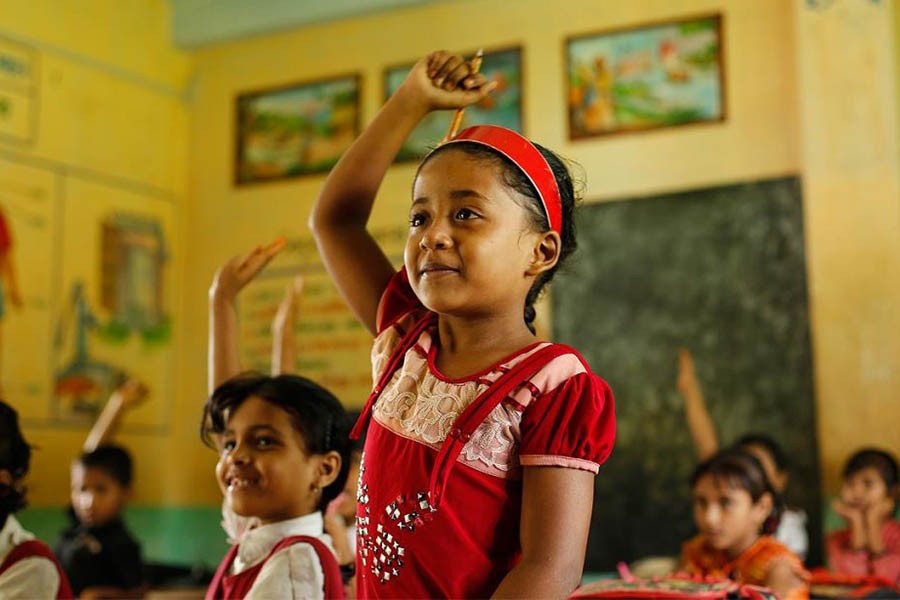
Published :
Updated :

The argument put forward by the ambassador and permanent representative of Bangladesh to the United Nations that 'rights of the children are best protected by ensuring their education and healthcare, among others' is incontestable. Indeed, proper education alone can guarantee a better life for human beings. Their health must as well be taken care of in order to ensure that they develop healthy bodies. Bangladesh has come a long way off from the miserable status when child mortality and illiteracy were pervasive. The human capital index the World Bank has prepared for the first time puts Bangladesh ahead of its two larger neighbours India and Pakistan. According to the index, a child in Bangladesh stands the chance of realising his/her potential of productivity better than his/her counterparts in India and Pakistan when they will reach adulthood. The country may be lagging Nepal and Sri Lanka but the indication is highly positive.
Undoubtedly, the World Bank findings should pour honey into the ears of policymakers and political leaders. Because it vindicates some of the initiatives taken for improvement of not only the condition of children but also of the state of the population in general. That child mortality has been drastically reduced and enrolment in primary schools has been nearly cent per cent speaks of the progress made. Countrywide immunisation programme is found to be complementary to this effort. Poverty eradication programmes taken as part of those aimed at attaining the sustainable development goals (SDGs) has also been complementary. Some of the country's achievements have been enviable even to other nations including the one from which this country parted its way in 1971. No wonder that a Pakistani journalist has suggested that premier Imran Khan followed the Bangladesh development model instead of imitating the West.
Up to this, there is no argument. But there are still miles to go before Bangladesh ties up its loose ends. The percentage of school enrolment is not all. It is negated by a high percentage of dropouts. Girls in particular drop out in large numbers after completion of primary education. Child marriage may have been curtailed but could not be eliminated. According to the International Labour Organization's (ILO's) 2013 estimate, 3.45 million children aged between 5 and 17 worked as child labourers in this country. Of them 1.28 were engaged in hazardous jobs. There is no reason to think that this picture has changed for the better. The number may have gone up further by this time.
This by no means is a fun that so many children are forced to waste away their childhood for a pittance. The hard reality is that the country could not as yet develop a system to send all children of school age to schools and retain them at least up to the secondary level. Now that the country's resources permit such a task, equitable distribution of resources and their rational use still remain a far cry. Primary education is free of cost but then the supporting systems are not. Focus has to be directed to this area in order to take care of the disadvantaged so much so that no child has to take up works --let alone the hazardous ones -- for an earning.


 For all latest news, follow The Financial Express Google News channel.
For all latest news, follow The Financial Express Google News channel.